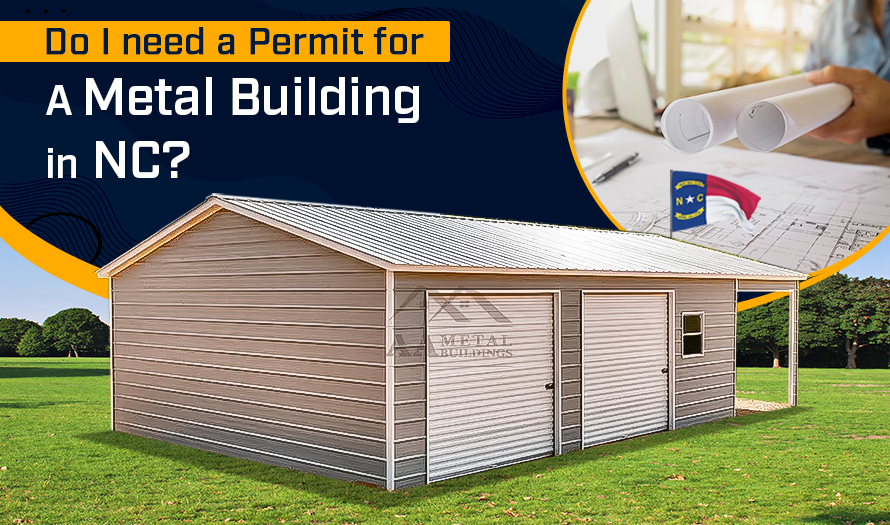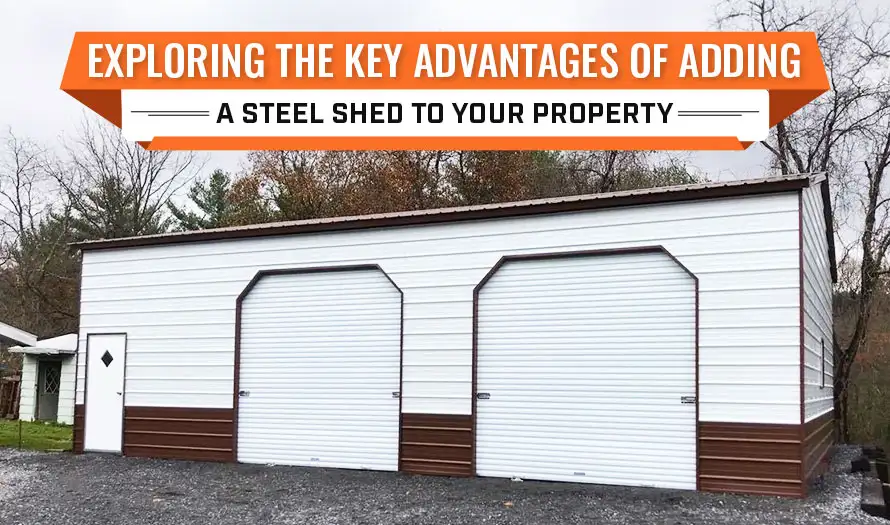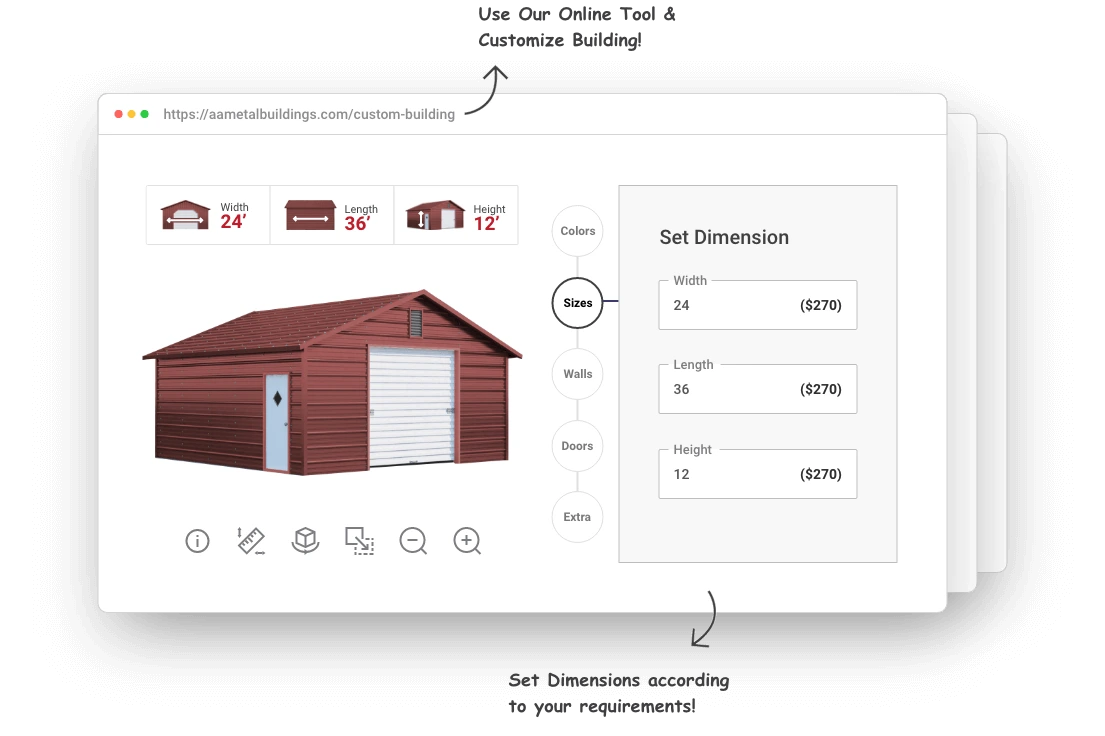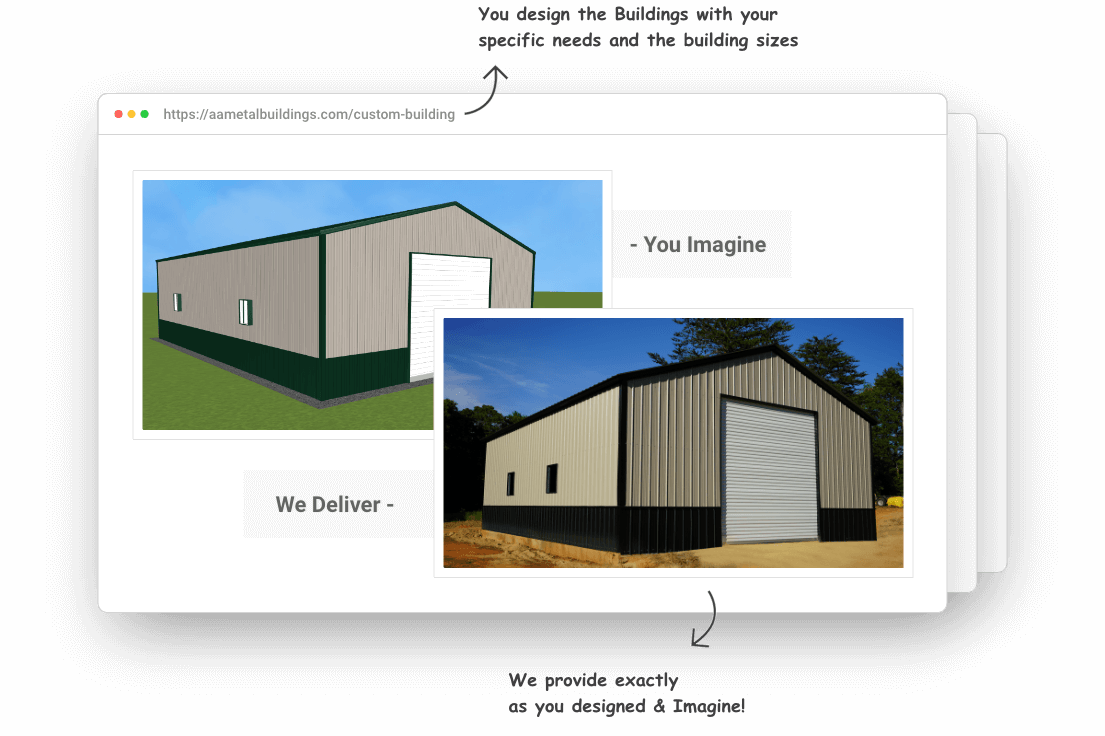Building a metal structure in North Carolina necessitates obtaining a permit. Building codes and regulations ensure your project adheres to safety standards, aligns with the local zoning plan, and protects the environment. Navigating the permit process can seem complex, but thorough preparation and understanding of key considerations can make it smoother.
Who’s Responsible?
As a property owner, securing permits and adhering to regulations falls squarely on your shoulders. This process safeguards residents and the environment and demonstrates your commitment to building safely and legally.
Zoning Regulations: Residential vs. Commercial
Zoning rules establish separate areas for residential and commercial development. Ensure your planned location aligns with the proper zoning designation. A commercial metal building (restaurant, shop) needs a commercial zone, while a residential building wouldn’t be permitted in a busy business district.
Getting Your Permit
1. Research Local Regulations
Find your area’s specific requirements for metal buildings on the local government website or planning department. This will explain zoning rules, building codes, setbacks, and other considerations. Valuable resources include:
- NC Department of Administration Metal Building System Guidelines: https://www.doa.nc.gov/documents/files/metal-building-system-guidelines/open
- Official County Government Websites:
https://www.nc.gov/your-government/county-government-websites
Search your county’s website for specific resources.
2. Develop Detailed Plans
Create detailed plans outlining your project’s scope and specifications before applying. These plans should include architectural drawings, structural engineering details, and site plans.
3. Contact Zoning Department
Discuss your project with the local zoning department to confirm your location and specifications comply with regulations. They can advise you on setbacks, land use, and special requirements.
4. Speak with the Building Department
Engage with the building department. They’ll review your plans for compliance with building codes covering structural integrity, fire safety, electrical systems, etc. If approved, you can proceed to the permit application.
5. Submit Permit Application
Submit your application with detailed plans and associated fees. Your application will be reviewed for completeness and compliance.
6. Engineering Approval
A licensed structural engineer may be required to provide calculations and ensure stability for more extensive or complex buildings, especially in areas prone to high winds or seismic activity.
7. Final Inspections
Schedule inspections throughout construction to verify your building meets safety and code requirements. This paves the way for a final certificate of occupancy.
Key Permit Evaluation Factors
1. Height
Taller buildings may have stricter requirements due to stability and proximity to other structures. Understand local height limitations and design accordingly.
2. Width
Wider structures may need additional support, especially in areas prone to strong winds or seismic activity. Building officials will consider the chosen materials, local weather conditions, and the building’s purpose.
3. Square Footage
Total square footage must comply with your area’s zoning regulations. Exceeding allowable square footage could lead to permit denial or require adjustments to your plans.
4. Building Materials
The type of steel and other components must meet safety standards and be suitable for the intended purpose. For example, buildings in flood zones or harsh weather areas may require specific materials.
5. Wind Loads
North Carolina’s susceptibility to solid winds necessitates careful wind load calculations in your building plans to ensure it can withstand expected wind forces. This may involve additional bracing or reinforcements.
6. Snow Loads
Snow load calculations are crucial in areas that experience snowfall, such as the mountainous regions of NC. The design of the steel building should account for the weight of accumulated snow to prevent collapse.
7. Electrical Wiring
Proper electrical installation is vital for safety and functionality. Building officials will assess your electrical wiring plans to ensure they adhere to safety codes regarding wiring type, grounding, and circuit breaker capacity.
8. Resistance to Natural Disasters
Due to the state’s vulnerability to natural disasters, the structural design’s ability to withstand hurricanes, tornadoes, and other events is evaluated. This may involve specific reinforcements and designs for improved resilience.
9. Fire Safety
Fire safety regulations are paramount. Building officials will assess your plans for proper fire exits, sprinkler systems, fire-resistant materials, and adherence to all relevant fire codes.
10. Accessibility
Depending on the intended use, accessibility requirements like wheelchair ramps and door widths may come into play.
Additional Considerations
1. Timeline
Allow ample time for the permit application process, which can take weeks or even months, depending on the complexity of your project and the workload of the local building department. Plan accordingly and avoid starting construction until you have your permit.
2. Budget
Factor in the cost of permit fees, engineering fees, and potential revisions to your plans before starting construction. These costs can vary depending on the size and complexity of your project.
3. Compliance
Always abide by all permit requirements and building codes throughout construction. Failure to comply can result in costly fines and even project stoppage.
4. Insurance
Check with your insurance provider to understand the potential coverage implications for your metal building project. Additional insurance may be required depending on the building’s size, purpose, and location.
5. Professional Help
Consider seeking assistance from experienced professionals like architects, engineers, and permit expediters. They can guide you through the permit process, ensure your plans meet all requirements, and help avoid delays.
Additional Resources
- North Carolina Department of Labor Building Codes Division: https://www.labor.nc.gov/
- International Code Council (ICC) SafeCodes: https://www.iccsafe.org/
- Federal Emergency Management Agency (FEMA): https://www.fema.gov/
Remember, obtaining permits can be complex. Consulting experienced professionals like architects, engineers, and permit expediters can streamline the process and ensure your building project meets all requirements.








